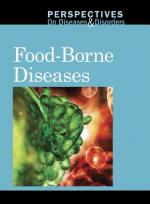|
This section contains 2,584 words (approx. 9 pages at 300 words per page) |

|
Rick Linsk and Gita Sitaramiah
About the author: Rick Linsk and Gita Sitaramiah are reporters for the Pioneer Press in Minnesota.
Nationally, two out of every five cases of food-borne illness begins with restaurants or caterers. The poor hand-washing practices of restaurant employees spread many types of illness, such as hepatitis A. The presence of other disease-causing organisms such as E. coli, Salmonella, and Listeria, is usually the result of fecal contamination of meat during processing. Poor food-handling procedures, such as not cooking meat at a temperature high enough to kill pathogens or failing to keep food cold enough to prevent bacteria growth, also cause food-borne illnesses.
Tracie Eckstrom's friends still rib her: She should have had a beer. Relaxing at the Hoggsbreath Bar & Restaurant in Little Canada, [Minnesota] after a softball game in March [2000], Eckstrom was the only team...
|
This section contains 2,584 words (approx. 9 pages at 300 words per page) |

|




